A dancer flits between the divine and the mundane
Sat, 06 Jul 2019 18:02:00 | Print | Email Share:
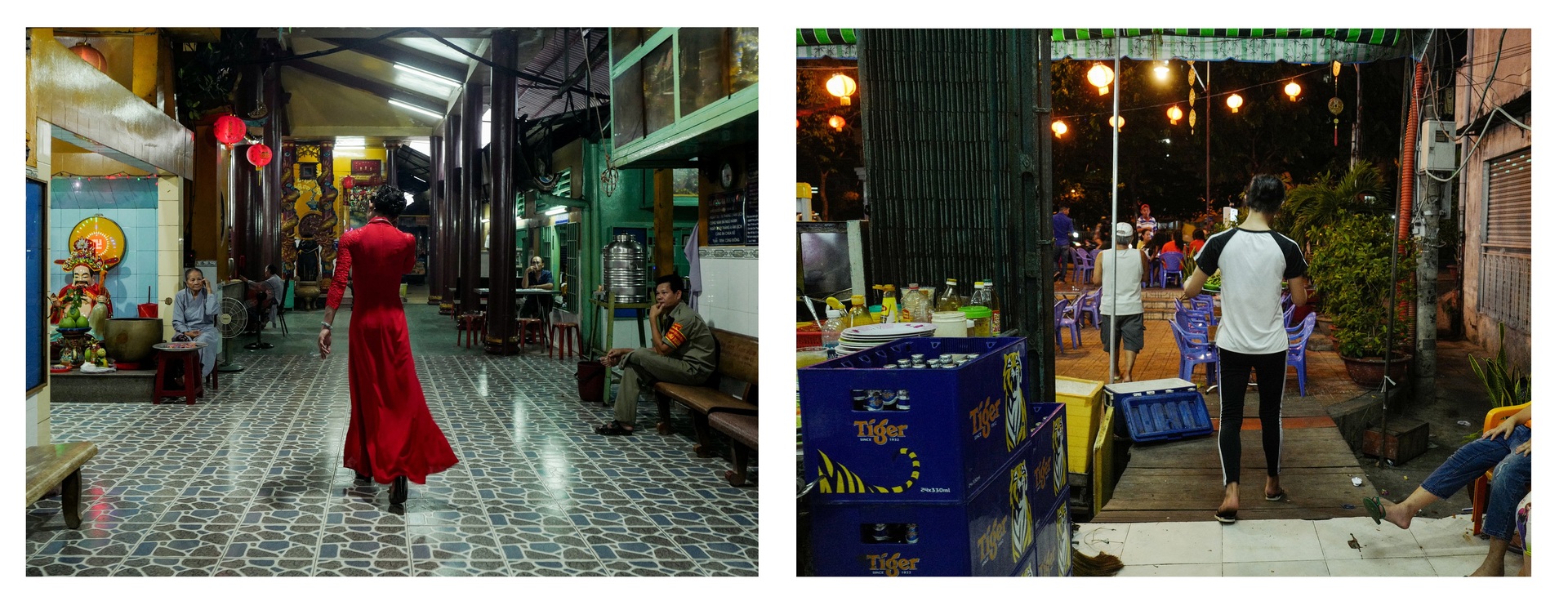
A dance to commune with goddesses, a dying tradition, gives a transgender artist peace, happiness and strength to confront adversity.
It is 9 p.m., and Hieu is dashing around with trays piled with plates and beer glasses.
It is peak hour, and drinking parties have just begun in her small restaurant on the banks of the Ben Nghe Canal in Ho Chi Minh City.
As she hustles and bustles, serving customers, it is difficult to imagine that less than an hour earlier, she was a medium for the gods, with people eagerly awaiting a message from the divine through her.
The contrast between the two lives Hieu leads could not be greater, but she flits from one to the other with effortless ease.
Wearing a red traditional Vietnamese tunic and a pair of high-heels, she dances in a temple, singing prayers for peace and prosperity for the community as a whole, and minutes later, she is wearing a pair of flip-flops and moving lithely among blue plastic tables, face still full of makeup, but clothes changed to sportswear.
At twenty-four, Nguyen Thanh Hieu is one of few young artists still performing the holy dance of bong roi in the south of Vietnam. The dance form is on the verge of extinction, observes and practitioners say.
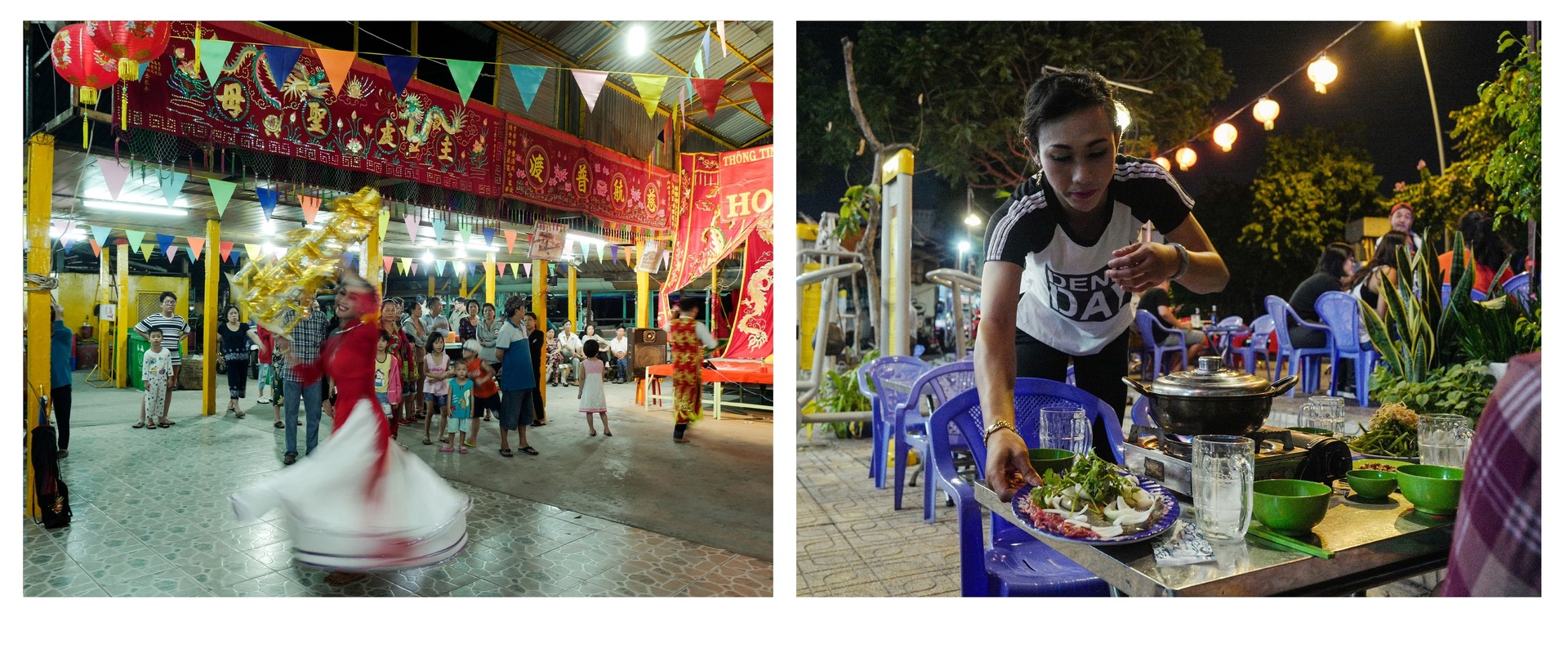 The holy dance was developed by the first waves of Vietnamese to migrate to the southern frontier, it is said.
The holy dance was developed by the first waves of Vietnamese to migrate to the southern frontier, it is said.
It is associated with the worship of goddesses during the Le Via Ba festival. It involves brightly dressed older women or transgender men performing a combination of the singing, dancing and balancing acts to the accompaniment of drums and Vietnamese violins (dan nhi).
The most distinctive and celebrated aspect happens when the performers dance and sway on the tip of their toes, with a tray of offerings on their heads. The offerings can be as small as a bowl of flowers, a paper-made shining tower, or as big as a drum or even a motorbike.
Cultural experts and historians have said that bong roi not only inherits traits of the Cham culture but also carries resemblances to an Indian Hindu festival, where floral offerings are placed on the heads of dancers.
Despite being an indispensable part of the spring festival in the region, this dance stayed under the radar on Vietnam’s mainstream religious landscape. It was only towards the end of the 19th century that bong roi was recorded as being popular at many shrines and temples.
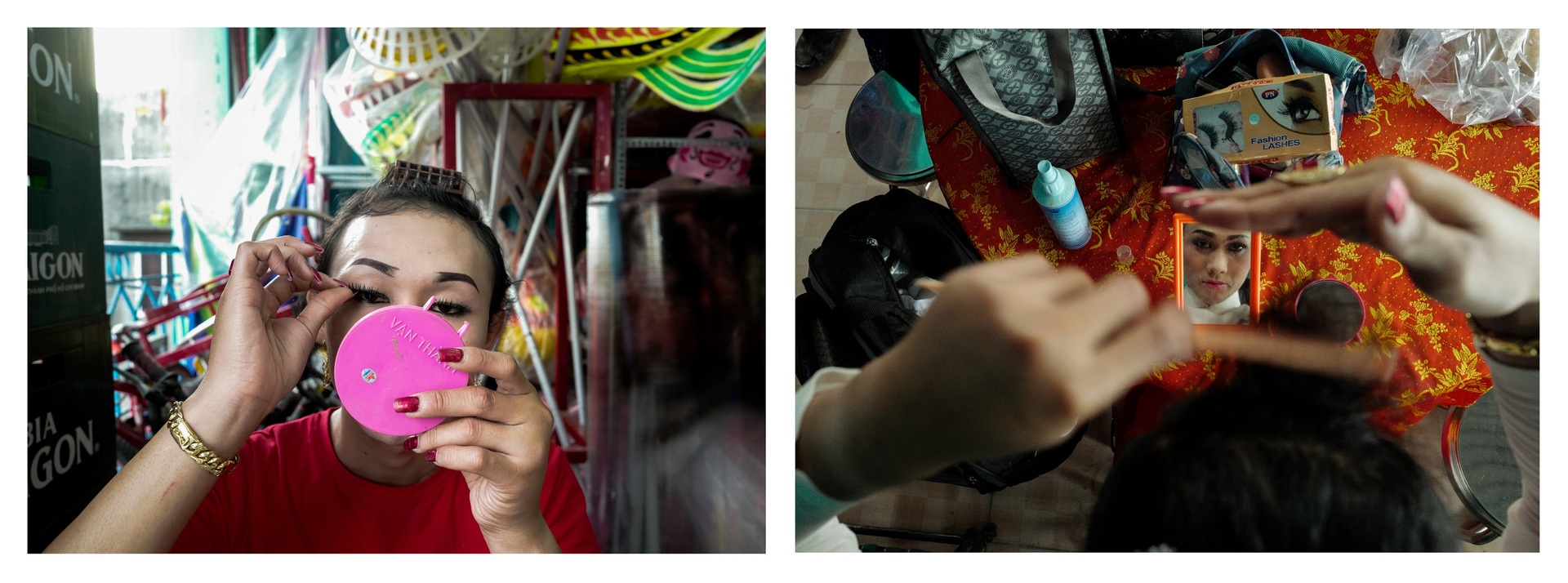 Hieu first entered the sacred world of bong roi when she was a nine-year-old boy. At that age he would sneak through the crowds in the neighborhood every spring to see the dance. She was awed by the sight of performers stepping and twirling to drum beats.
Hieu first entered the sacred world of bong roi when she was a nine-year-old boy. At that age he would sneak through the crowds in the neighborhood every spring to see the dance. She was awed by the sight of performers stepping and twirling to drum beats.
With their singing of hymns and energetic dance movements, the performers invited goddesses and ancestors to attend the festival and bless the community with peace and prosperity.
“I love that part the most,” Hieu said of her career choice years later. It helped her to find her own happiness, Hieu added.
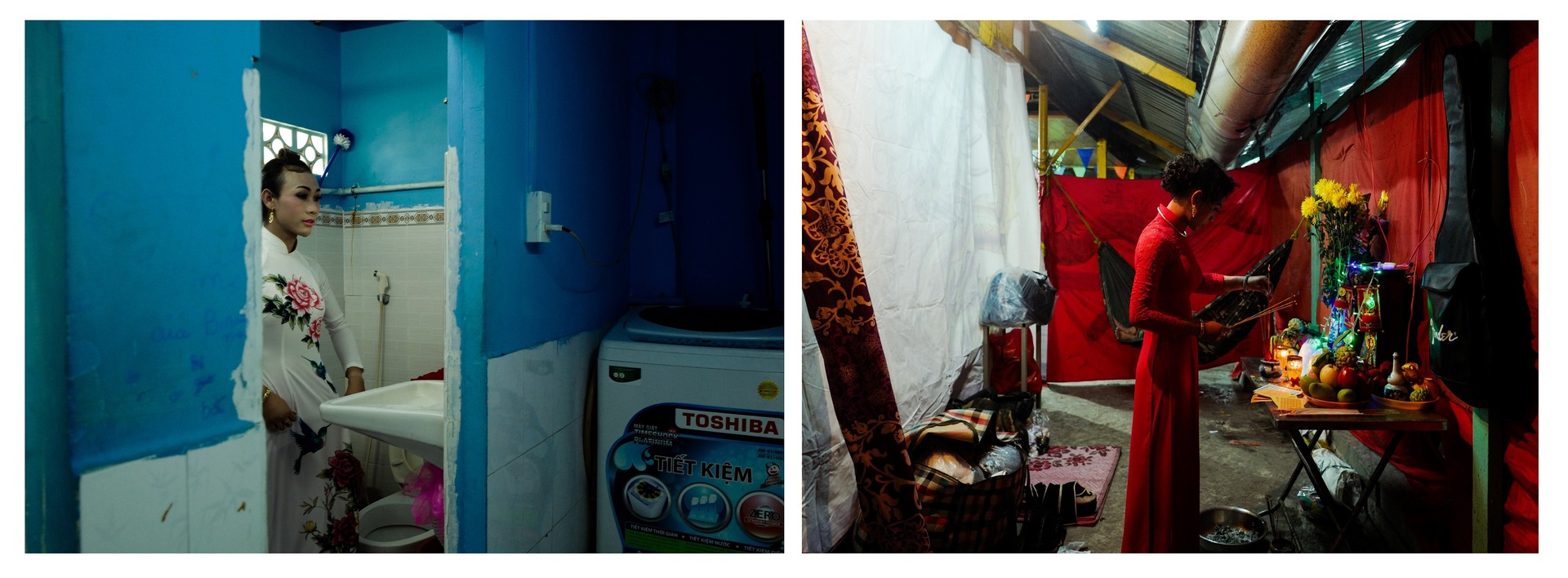 Being a bong roi artist requires not just the voice and the talent to master the dance’s moves, but also the physical strength and endurance to keep smiling and keeping up the pace of the performance on from 8 a.m. to as late as 2 a.m. the next morning.
Being a bong roi artist requires not just the voice and the talent to master the dance’s moves, but also the physical strength and endurance to keep smiling and keeping up the pace of the performance on from 8 a.m. to as late as 2 a.m. the next morning.
The working hours depend on how many families in the community hire the bong roi performer to represent them and dance for the goddess during the festival.
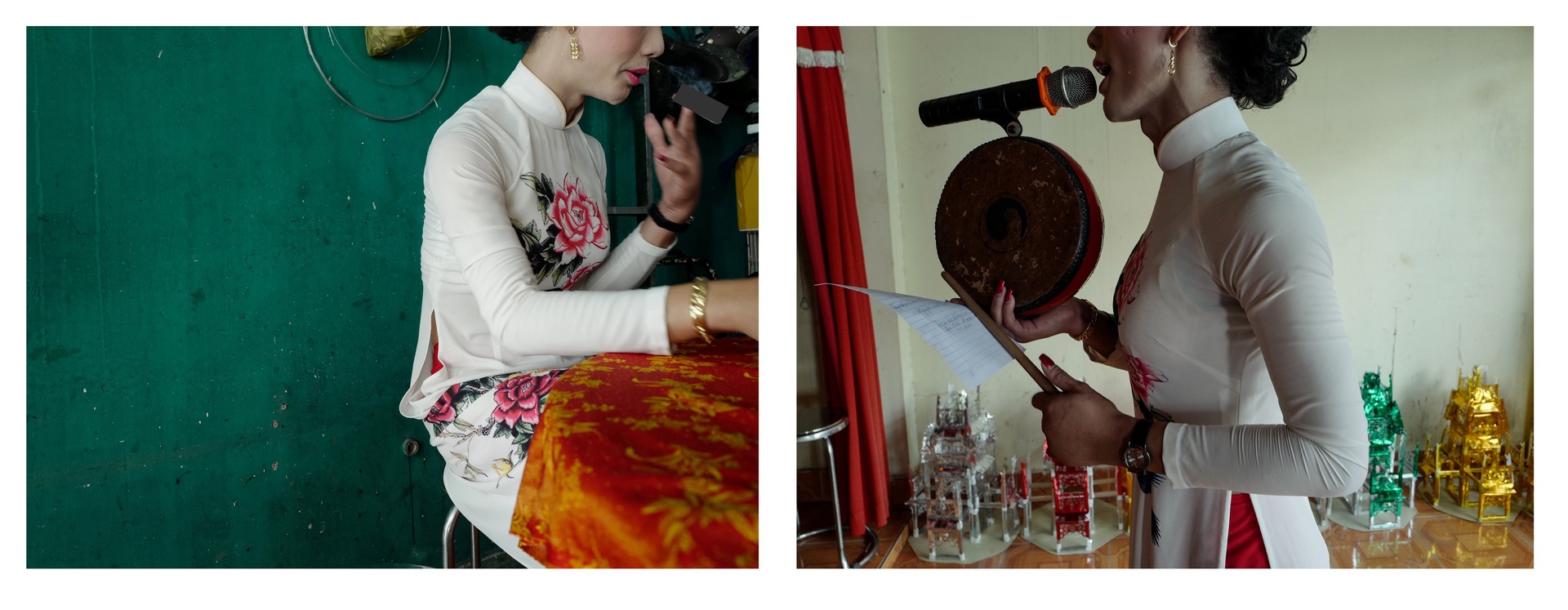 The dance helps Hieu and her peers make money during the festival. They make and sell prayer towers on the spot for families. Later they dance in front of the Goddesses’ altars with the towers on their heads before burning it as a votive offering.
The dance helps Hieu and her peers make money during the festival. They make and sell prayer towers on the spot for families. Later they dance in front of the Goddesses’ altars with the towers on their heads before burning it as a votive offering.
Given their special connection with the goddesses, bong roi performers are also believed to have the power of telling fortunes. They would give explanations for unfortunate experiences that the faithful have had, and offer advice on how to avoid omens, mostly by treating others well and lending a hand to people in need.
Unlike Hieu, senior bong roi performers tend to tell fortunes only at midnight during the festivals. They believe that it is the time when there is a high chance for the goddesses, lords, and sometimes spirits to visit the shrines and help them “see” the fates of people.
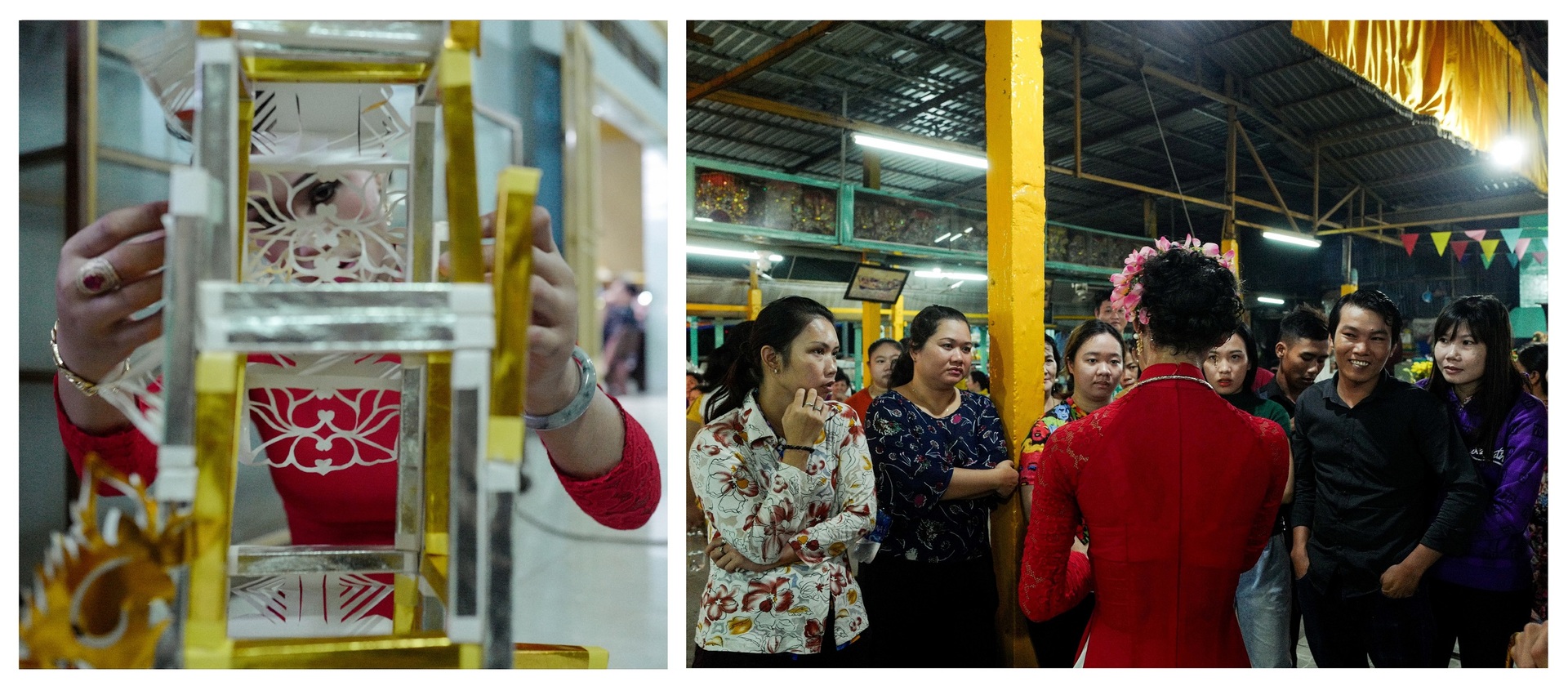 For decades in the last century, the worshipping dance was banned in Vietnam, because any sort of mysticism and fortune-telling was deemed superstitions with negative repercussions for the society.
For decades in the last century, the worshipping dance was banned in Vietnam, because any sort of mysticism and fortune-telling was deemed superstitions with negative repercussions for the society.
Things loosened in up the 90s, but this age-old custom has been struggling to bounce back. In a 2017 conference in Dong Nai Province on preserving the worship of goddesses and the practice of bong roi, cultural researchers pointed out that the number of practitioners was dwindling, that most of the artists were aging and younger heirs for the art form was not attracting the younger generation.
Hieu is sad to see this happen. “Most of my peers, who were also enchanted by bong roi performances and actually took months and even years to learn it, dropped out eventually. Even those who are still practicing it are not certain about how long they can continue.”
Even as performers for goddesses and saints, bong roi artists are not spared societal stigmas of being transpeople and performers.
“To people, like the Ladies’ (goddesses) worshippers, who understand our role, we are artists," Hieu said. "Others think we are simply entertainers.”
There have been times when Hieu and her bong roi colleagues were sexually harassed while performing. "They think that is what "entertainers" at parties are for," she explained.
Once she was assaulted by unknown thugs after a show in a dark alley late at night.
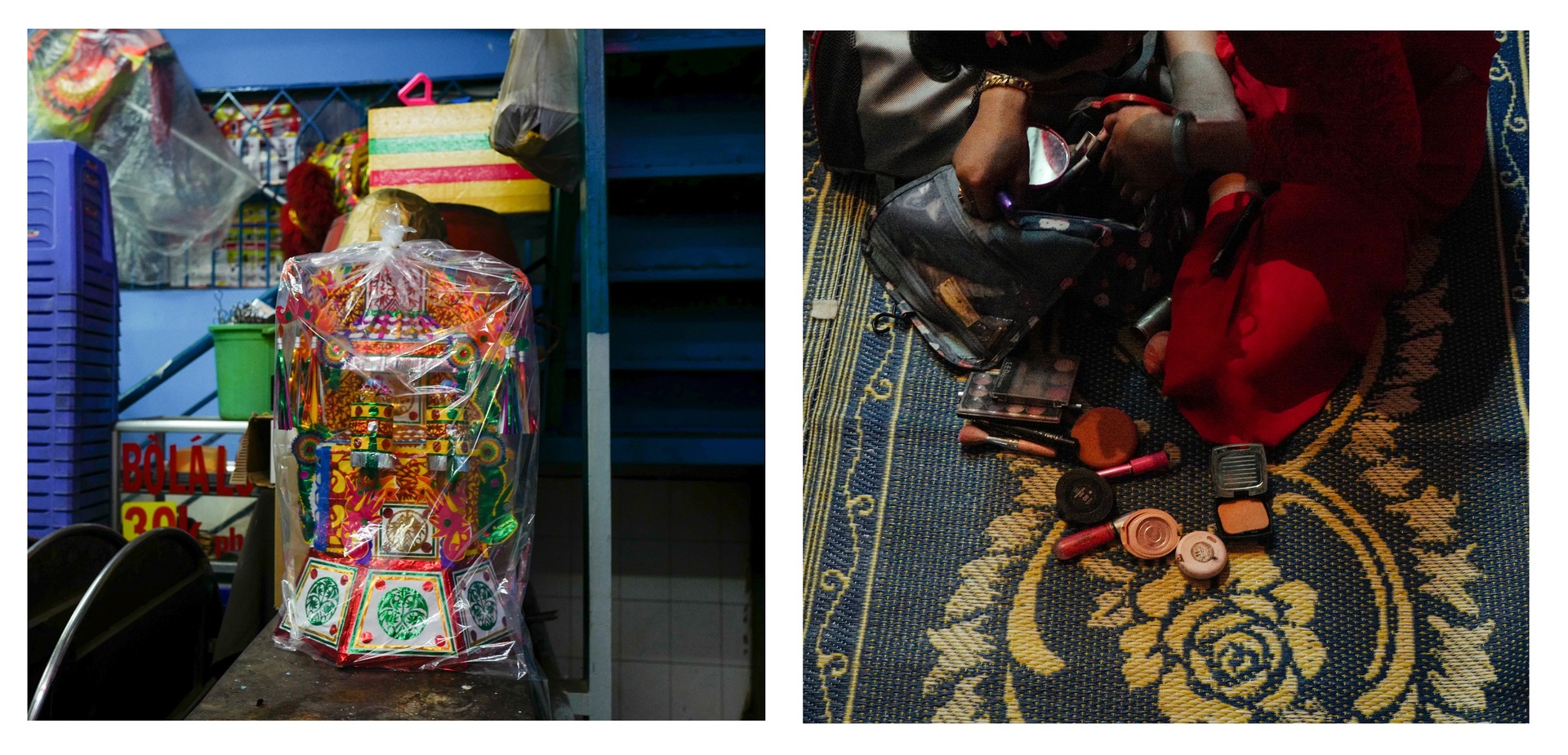 Despite the trouble she has faced and could face in the future, Hieu would not trade the performances for anything in the world.
Despite the trouble she has faced and could face in the future, Hieu would not trade the performances for anything in the world.
Apart from the feeling of being protected by the goddesses, bong roi has helped her, on a personal note, move on from the death of her mother - who was a major support – and a recent break-up with her lover.
It also gave her the chance to become an artist and dance on a daily basis.
Years into the holy art, Hieu still juggles jobs to keep her passion alive.
Since bong roi is usually performed in the first three months of a lunar year – the peak of Spring ceremonies in Vietnam, she spends the rest of the year working in the bar cum restaurant of her grandparents.
They pay her a modest three to VND4 million ($128-$170) like any other worker, and provide her with daily meals and a room to rest.
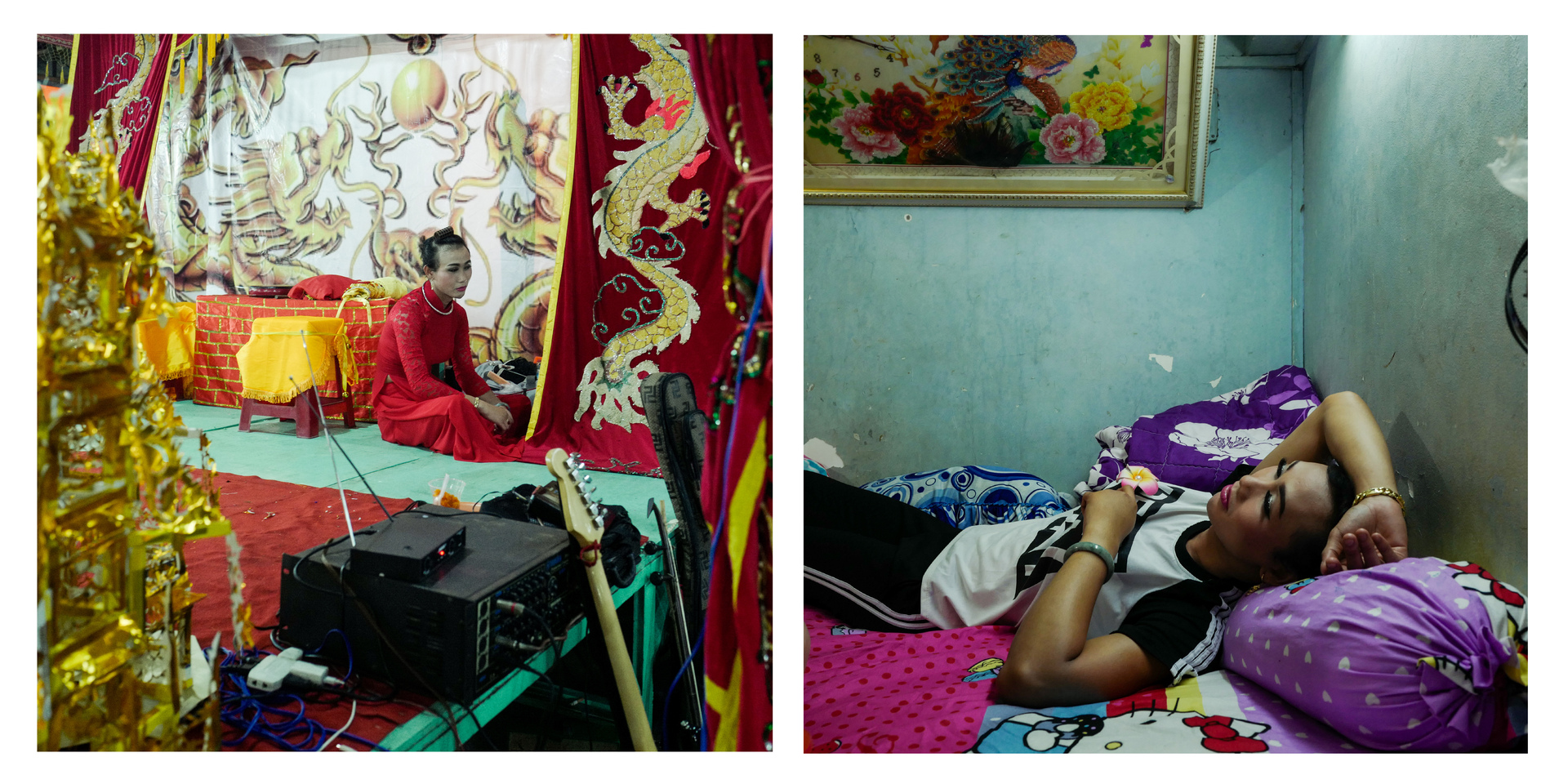 In the festival season, Hieu’s schedule is always full. There are days she has to rush to three different places to perform the peace prayers.
In the festival season, Hieu’s schedule is always full. There are days she has to rush to three different places to perform the peace prayers.
“But I savor those busy, happy days,” Hieu said. “When they are over, I am terribly sad all the time and keep counting the days for the next spring season to come.”
Photos by Eason Chang
Story by Eason Chang, Nhung Nguyen.
By: VnExpress
---------------------------------------------
Same category News :













